BEFORE
AFTER
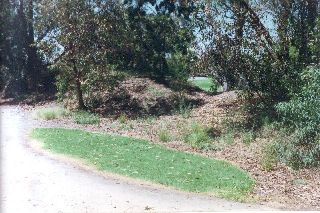
Before
A 'lawn' of kikuyu grass outside the gallery entrance.
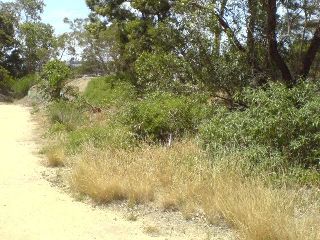
January 2009
is turned into an area of native grasses, flowers and shrubs.
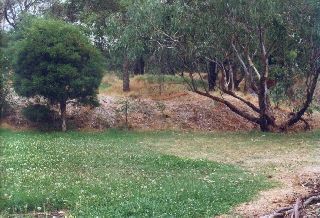
Before
A 'lawn' of kikuyu grass outside the gallery.
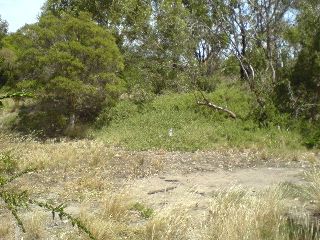
January 2009
is turned into an area of native grasses, flowers and shrubs with the bank covered in grasses and saltbush.
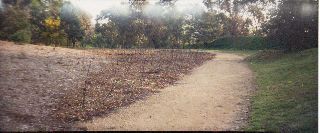
Before
The path between weeds
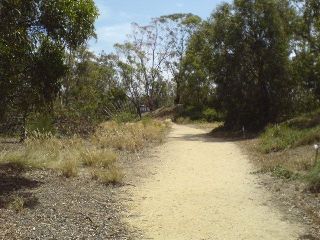
January 2009
becomes a densely planted native grassland.
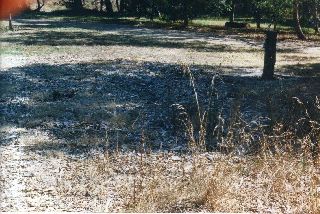
Before
The ground is sparsely covered with exotic weeds.
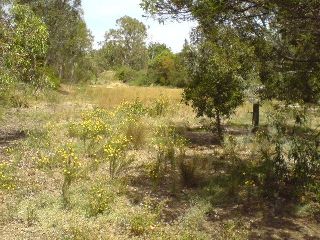
January 2009
The weeds are replaced with native species, including Stipa, Everlasting daisies, Pigface, and Wattles.
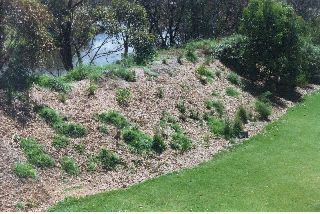
Before
A levee bank after planting with natives.
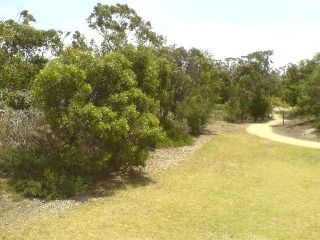
January 2009
The levee bank has been stabilised and covered in indigenous trees and shrubs.
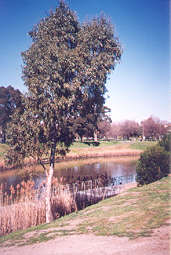
July 2001
The eastern bank of the island. A lone river red gum and a few shrubs on a 'lawn' of exotic weeds.
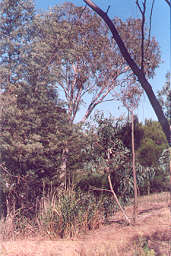
March 2006
A woodland of river red gum and native grasses. The river bank lined with a thicket of swamp paperbark, silver wattle, hemp bush, and river bottlebrush.
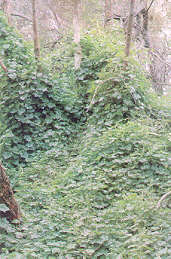
1998
Cape Ivy, an exotic weed smothering native plants.
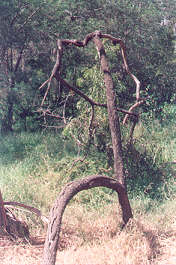
2005
The Cape Ivy is removed, revealing a native lightwood tree, still alive but permanently bent by the years under the weight of the vine.

2000
"Falling Fence" sculpture set into a steep, dry bank prone to erosion.
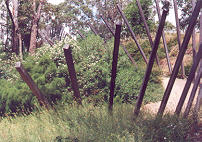
January 2005
The upper sections of the bank are planted with dry-tolerant and soil binding species, including several types of saltbush, boobialla, prickly speargrass, drooping Cassinia and Golden Wattle.
Lower down is riparian scrub. Ground level plants are Hop Goodenia, Dianella, Matrush. Large shrubs are prickly Moses, Tree Violet, Spreading Wattle, Burgan, Swamp Paperbark, Tree Everlasting. Upper storey is Manna Gum, River Red Gum, Silver Wattle and Blackwood.

July 1997
"Stone House" sculpture. The ground is covered with exotic weeds. The artist asked that the area be surrounded with a dense thicket so that the sculpture can be approached only from a single path.
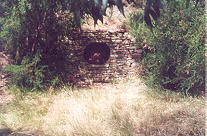
January 2005
The area is surrounded by a thicket of Hedge Wattle, Paperbark and Prickly Moses. The exotic weeds have been removed and replaced with native species, including Wallaby Grass, Weeping Grass, Dichondra, and Dwarf Skullcap.
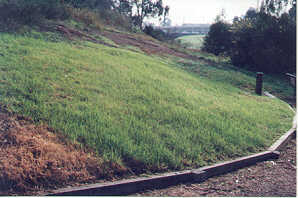
June 1999
A 'lawn' of non-native grass.
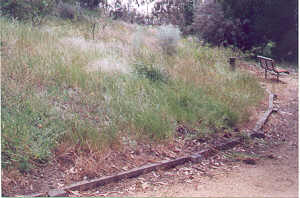
December 2001
A grassland with a diverse range of native grasses and wildflowers, including 3 types of spear grass, 2 types of wallaby grass, 4 types of everlasting daisy, 4 types of saltbush, flax lilies, bluebells, blushing bindweed, blue devils, cotton fireweed, pussytails, wild parsnip, running postman, small-leafed eutaxia, wattle lomandra, and austral storkbill, providing habitat for native birds, insects and lizards.
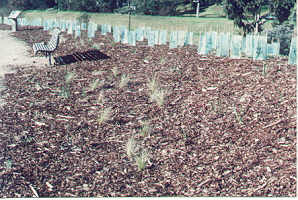
July 1997
The area is mulched and planted. Tree seedlings are inside plastic tree-guards.
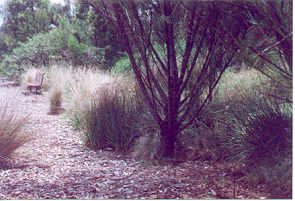
December 2001
A woodland of drooping sheoke, lightwood, and sweet bursaria, with an understory of austral indigo, kangaroo apple, rock correa, rosemary grevillia and small leafed clematis. A ground layer of tussock grass, flax lily, creeping saltbush, austral storksbill and sprawling bluebell. In the damp depressions are golden spray, spike rush and slender speedwell.
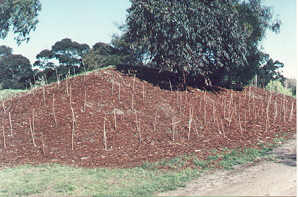
September 1997
The area is mulched and planted.
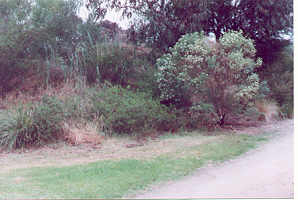
December 2001
Shelter is provided for small birds in dense and/or prickly shrubs, including hedge wattle, sweet bursaria, treee everlasting, small leafed clematis, rosemary grevillea, tree vioet, twiggy daisy bush, prickly moses. The ground layer consists of tussock, spiny mat-rush, small leaf eutaxia, flax lilies, creeping saltbush, and native raspberry.
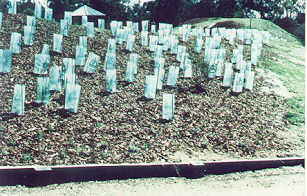
July 1997
The area is mulched and planted. Tree seedlings are inside plastic tree-guards.
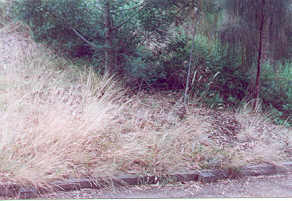
December 2001
A woodland of drooping sheoke, black wattle, sweet bursaria, with an understory of austral indigo, rock correa, rosemary grevillia and small leafed clematis. A ground layer of wallaby grass, spear grass, bluebells, flax lily, austral storksbill, button everlasting, warrigal greens, creeping saltbush, and ruby saltbush.